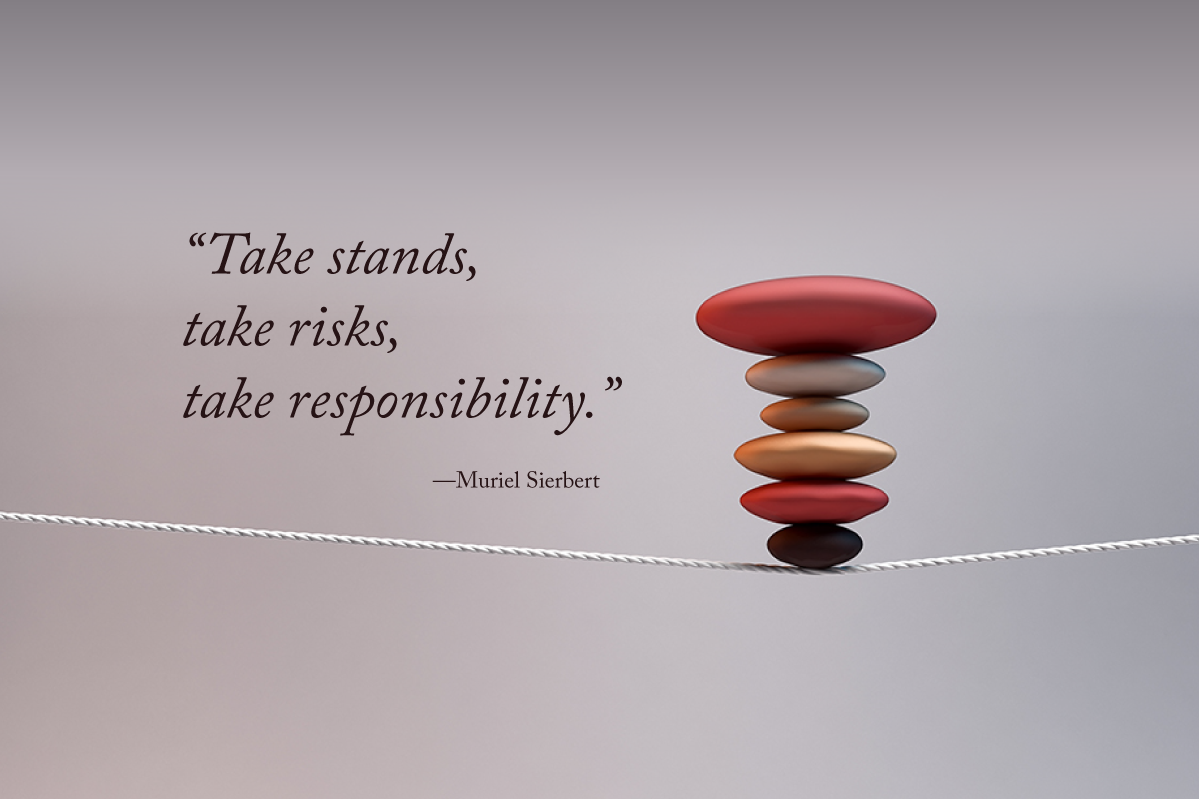WHEN IT COMES TO INVESTING WITH SUCCESS THE GREATEST RISK MAY BE IN TAKING NO RISK AT ALL. DON’T TRADE THE ACTUAL SECURITY OF YOUR RETIREMENT FOR THE FALSE SENSE OF SECURITY THAT COMES WITH INVESTING SOLELY IN “LOW-RISK” OPTIONS.
Taking on the right degree of risk is something that many investors struggle with when crafting a retirement strategy. Many risk-averse investors believe that stocks (or equities) are too risky a proposition when it comes to building and protecting their retirement. The reality, however, is that not investing some of your portfolio in equities can also pose a serious risk to your long-term financial plans. With a portfolio composed of bonds, T-bills, and other “low-risk” investments you may find yourself underfunded for retirement if the growth of your portfolio does not outpace inflation.
Self-proclaimed risk-averse investors often take on a surprising amount of risk when they invest without the guidance of a financial advisor. They rely on forecasts, chase past returns, gamble on individual stocks, run up unnecessary costs and tax liabilities, and fail to rebalance their portfolios for shifting levels of risk over time. As fiduciaries, it is our duty to advise our clients on the best possible strategy to achieve their financial goals, and this includes helping you make sure that the risks you are taking are the right ones for you.
Understanding the role that risk plays in investing begins with understanding how the market assimilates evolving risk levels. The highly competitive nature of markets means that new information is quickly built into prices, and as such, much of the worrying has already been done for you. This frees you up to stop second-guessing the market and instead, work with it to capture opportunities for growth.
Setting goals to manage risk
Your investment goals don’t just provide you with something to work toward and hope for in the future, they also help define key risks, determine the right approach to risk management, and decide the best ways to monitor performance, in the present.
For example, one of the primary goals of retirement is to provide an income using the money you have accumulated during your working years. The uncertainty of how much you can spend when there is nothing coming in, and how long it will last, represents a key risk in this situation. As advisors, we manage this uncertainty, by viewing investment performance as an important metric for increasing or decreasing risk. By monitoring investment performance and adjusting the level of risk we are able to reduce the uncertainty of maintaining a sustainable spend-down plan in retirement.
Risk is a part of everyday life
Even the most risk-averse among us take risks every day. Driving, crossing the street, cooking, exercising–All of these activities involve some degree of risk, but we accept those risks because the alternative would make it impossible to go about our day-to-day lives. Just as it would be impossible to travel to work or cook a delicious meal without some degree of risk, it is quite a challenge to fund your long-term financial goals without taking on some degree of risk to meet your objectives.
Most of the biggest decisions in your life, such as choosing a school, a career, or a spouse, are fraught with some degree of risk, yet most of us make these types of decisions throughout our lifetime. We make these difficult and complex decisions by weighing alternatives and consequences, considering short and long-term effects, balancing the rational and emotional, and oftentimes by asking for help and advice from a trusted confidant or expert. An outside perspective can often help you make a more objective and well-informed assessment of the situation and its potential risks and help you see aspects you may not have noticed or considered on your own.
“It is a terrible mistake for investors with long-term horizons – among them, pension funds, college endowments and savings-minded individuals – to measure their investment “risk” by their portfolio’s ratio of bonds to stocks. Often, high-grade bonds in an investment portfolio increase its risk.”
Warren Buffett, Annual Shareholder Letter, page 13.
The Value of Advice
At TriCapital, we view volatility as temporary market fluctuation while risk is the chance that your long-term financial goals will not be met, i.e. you run out of money in retirement. Further, when viewed on an after-tax and after-inflation basis, low volatility guaranteed investments such as cd’s and money market actually lose purchasing power. In our mind, there is nothing riskier than an investment guaranteed to lose purchasing power. When it comes to investing, this is the value that a trusted financial advisor can provide—not only when it comes to managing risk in your portfolio, but also in understanding your unique circumstances, needs, and objectives and how to best achieve them. Ideally, we could all achieve the financial success we desire without assuming any risk. However, the reality is that without risk there is no reward.
For more information on how we can help you plan for your future and grow your wealth, contact us at admin@tricapitalgroup.com ;or 704.571.8778.
Disclosure text: Securities offered through Triad Advisors, LLC, member FINRA/SPIC. Advisory services offered through TriCapital Wealth Management, Inc. TriCapital Wealth Management, Inc. is not affiliated with Triad Advisors, LLC.





